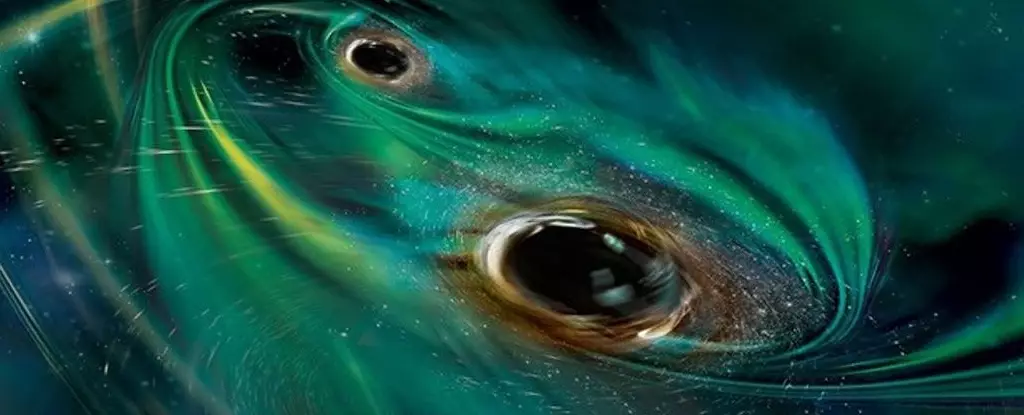In March 2021, the cosmos presented astronomers with an intriguing enigma—a potent burst of high-energy light emanating from a far-off galaxy. Initially classified as a supernova, this celestial event, dubbed AT 2021hdr, exhibited features that caught the attention of the Automatic Learning for the Rapid Classification of Events (ALeRCE) system. Its complexity hinted that there was more to the story than a typical stellar explosion. As researchers delved deeper into the observations, the discovery sparked a journey of exploration to uncover its true nature.
The breakthrough came in 2022 when continued observations revealed a surprising periodicity in the outbursts. The Zwicky Transient Facility (ZTF) recorded these events, which reappeared every 60 to 90 days. Recognizing that AT 2021hdr could not be merely a supernova, astronomers engaged in a broader analysis. Initially, one hypothesis centered around the notion of a tidal disruption event (TDE)—a dramatic phenomenon where a star approaches a black hole closely enough to be torn apart by its gravity. While TDEs can generate bursts of radiation, they usually lack the regularity observed in AT 2021hdr’s case.
Simulations Shed Light on the Mystery
As the investigation progressed, researchers scrutinized an alternative theory regarding a binary black hole system. In this scenario, instead of a singular TDE, they proposed that a massive interstellar cloud was interacting with two black holes in tandem. Advanced computational simulations suggested that, upon approaching a pair of binary black holes, the cloud would not be simply shredded; instead, it would undergo a tumultuous process as the black holes consumed it. This would lead to a series of periodic light bursts, coinciding with the binary orbiting motion of the black holes.
Groundbreaking Observations
Using data from the Neil Gehrels Swift Observatory, the research team observed noticeable oscillations in both ultraviolet and X-ray emissions. These observations aligned seamlessly with the bizarre light patterns previously noted by the ZTF. By analyzing these data points, astronomers established that the black holes had a staggering combined mass amounting to roughly 40 million solar masses and orbited one another every 130 days. Crucially, the passing interstellar cloud enabled the initial discovery of this extraordinary black hole system.
Looking ahead, researchers are enthusiastic about continuing their observations of AT 2021hdr to enhance their understanding of this unique cosmic ballet. The study not only aims to refine their existing models but also sheds light on the intricate dynamics between black holes and their surrounding galaxies. As scientists probe deeper into the secrets of the universe, AT 2021hdr stands as a poignant reminder of the wonders that lie beyond our earthly grasp. The merger of the black holes, projected to occur in about 70,000 years, adds yet another layer of intrigue to an already captivating narrative. By unraveling this mystery, astronomers not only gain insights into the mechanics of black holes but also into the narrative of our own universe’s evolution.

